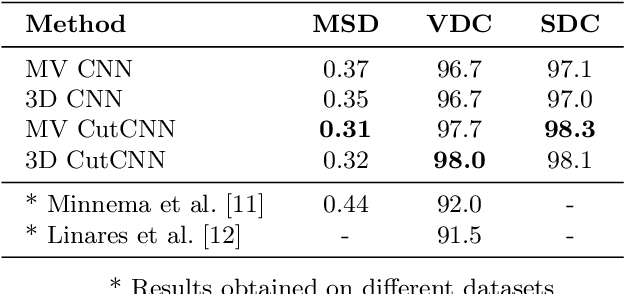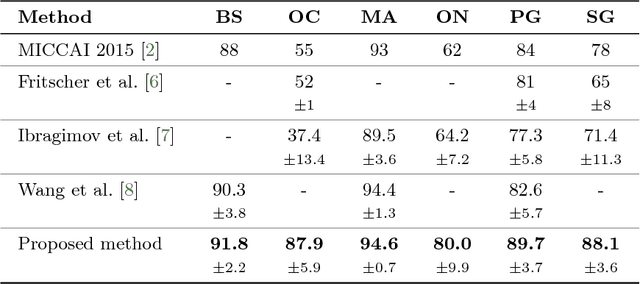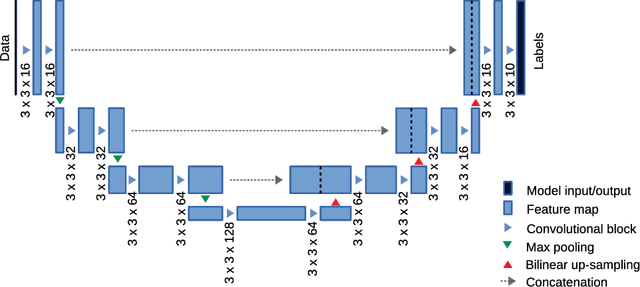Michal Španěl
Segmentation of Defective Skulls from CT Data for Tissue Modelling
Nov 20, 2019



Abstract:In this work we present a method of automatic segmentation of defective skulls for custom cranial implant design and 3D printing purposes. Since such tissue models are usually required in patient cases with complex anatomical defects and variety of external objects present in the acquired data, most deep learning-based approaches fall short because it is not possible to create a sufficient training dataset that would encompass the spectrum of all possible structures. Because CNN segmentation experiments in this application domain have been so far limited to simple patch-based CNN architectures, we first show how the usage of the encoder-decoder architecture can substantially improve the segmentation accuracy. Then, we show how the number of segmentation artifacts, which usually require manual corrections, can be further reduced by adding a boundary term to CNN training and by globally optimizing the segmentation with graph-cut. Finally, we show that using the proposed method, 3D segmentation accurate enough for clinical application can be achieved with 2D CNN architectures as well as their 3D counterparts.
Segmentation of Head and Neck Organs at Risk Using CNN with Batch Dice Loss
Dec 06, 2018



Abstract:This paper deals with segmentation of organs at risk (OAR) in head and neck area in CT images which is a crucial step for reliable intensity modulated radiotherapy treatment. We introduce a convolution neural network with encoder-decoder architecture and a new loss function, the batch soft Dice loss function, used to train the network. The resulting model produces segmentations of every OAR in the public MICCAI 2015 Head And Neck Auto-Segmentation Challenge dataset. Despite the heavy class imbalance in the data, we improve accuracy of current state-of-the-art methods by 0.33 mm in terms of average surface distance and by 0.11 in terms of Dice overlap coefficient on average.
 Add to Chrome
Add to Chrome Add to Firefox
Add to Firefox Add to Edge
Add to Edge